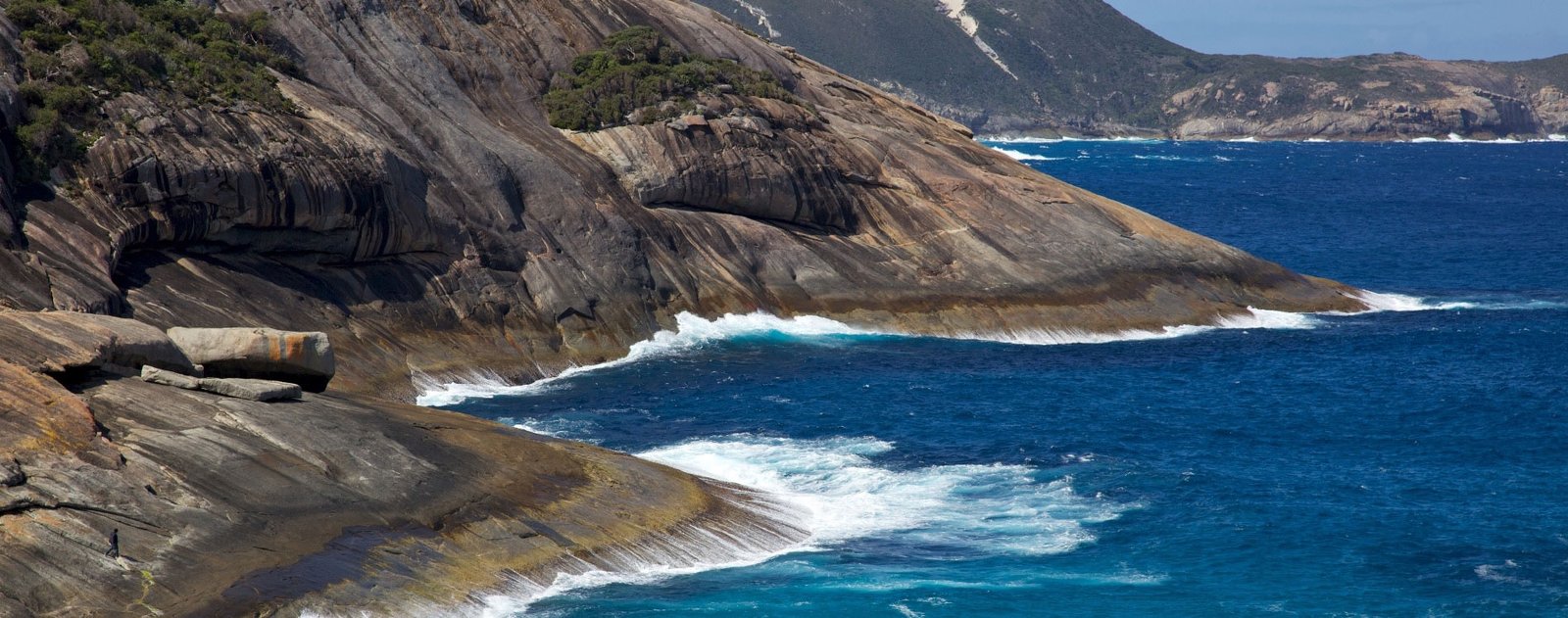First settled in 1826 by the British, three years before Perth, Albany is the oldest European settlement in Western Australia.
The commercial centre of the Great Southern region, Albany is now the largest town and port along the south coast. Until Fremantle Harbour was constructed, Albany acted as the colony’s main port and the harbour is still the commercial heart of the city.
Albany is set among wooden granite hills on the shores of an enormous double-bay natural harbour. The outer portion is the broad King George Sound, while the inner part is Princess Royal Harbour, where the port stands.
This sheltered harbour made Albany a thriving whaling port in the last century as whale migrations bring them close to the city’s shores. The whaling only stopped in 1978, and the whales have since become a tourist attraction, with increasing numbers cruising past and into King George Sound.
The untamed Southern Ocean lies on the Albany coast, with various natural features carved into the granite as testament to the power of the sea. As a result, the coastline around Albany features some of Australia’s most rugged and spectacular scenery. Many pristine beaches mean you don’t have to compete for sand space – try (misnamed) Misery Beach, or Ledge Bay and Nanarup Beach. The Bibbulman Track starts and ends here, just outside the visitor’s centre.
History
Albany was first visited by Captain Vancouver in 1791, but it was not until 1826 that the British settled here. Until Fremantle Harbour was constructed, Albany acted as the colony’s main port and the harbour is still the commercial heart of the city. Prior to European settlement, the area was previously occupied by the Aborigines and there is evidence of their presence, especially around Oyster Harbour.
During WWI, Albany became a coaling station for British ships bound for the East coast; it was the mustering point for transport ships of the 1st Australian Imperial Force heading for Egypt and the Gallipoli campaign. Albany also has several strong links to the Anzac story, and the first great Anzac Convoy assembled here. These days the harbour plays host only to grain carriers, fishing boats, dolphins, and pelicans.
Modern developments and high-rises have passed Albany by, so it remains a quietly bustling and attractive town, with numerous buildings reflecting its early days. It’s the centre of a rich agricultural region, historically important for sheep and wheat but now with numerous vineyards producing high class wine.



Leave A Comment